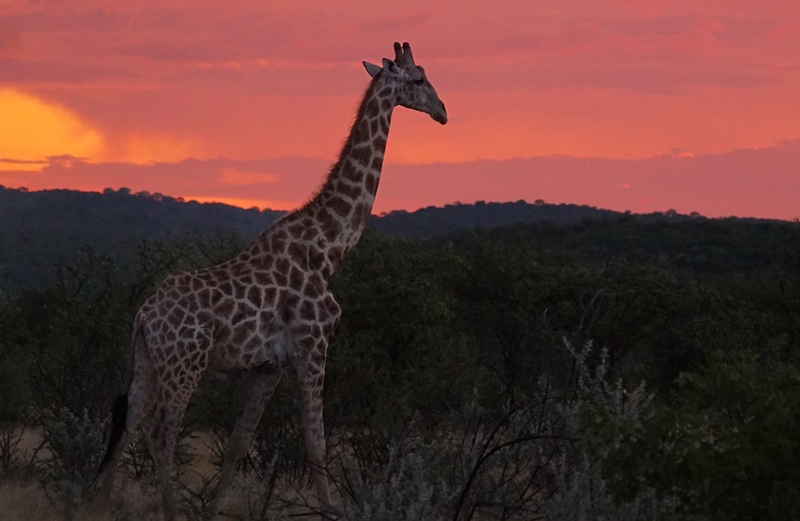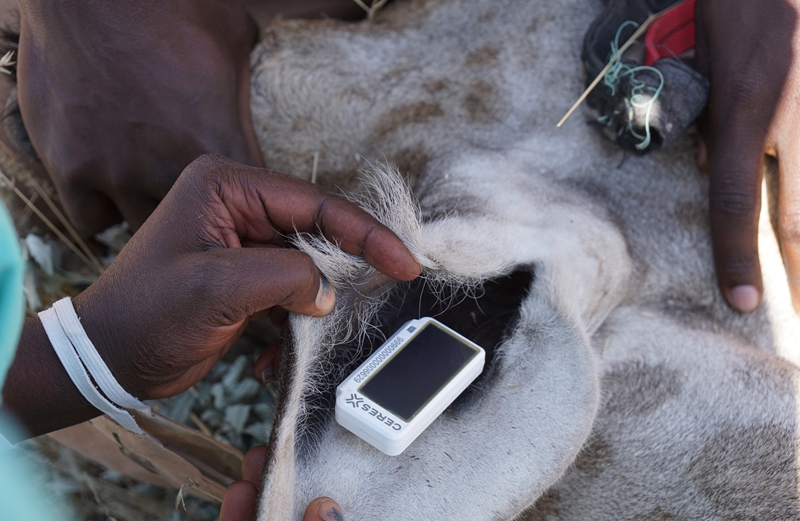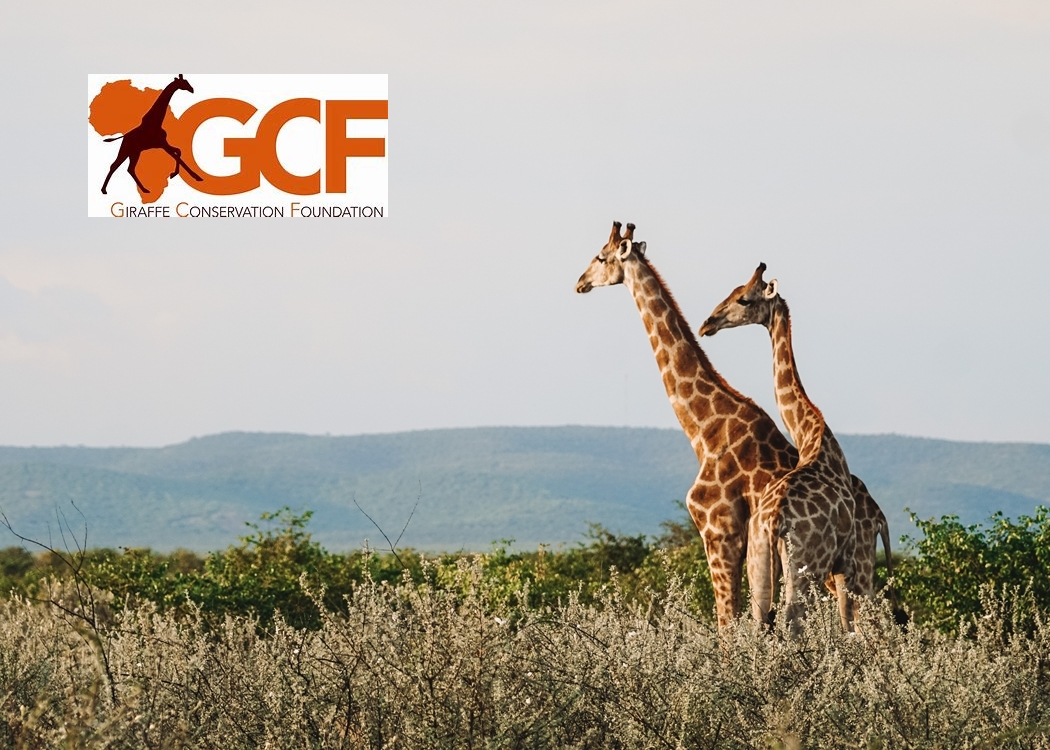
Project: Supporting the core field operations of the Savannah Landscape Ecological and Education Centre (SLEEC) in Namibia
2023 Project Partner: Giraffe Conservation Foundation (GCF)
The Giraffe Conservation Foundation (GCF) is the only NGO in the world that concentrates solely on the conservation and management of giraffe in the wild throughout Africa. Find out more about Giraffe Conservation Foundation (GCF).
Donate or Set up a Fundraising Page to support this project here.
About Giraffe Conservation Foundation (GCF)
GCF is dedicated to securing a future for all giraffe populations in the wild. It envisions a world where all giraffe can live wild and free within their historical ranges or habitats throughout Africa and are protected by the people around them.
Currently GCF is involved in and supports giraffe conservation initiatives in 18 African countries over 400,000 sq.km (100 million acres).
Work spans the whole gamut of giraffe conservation efforts, working with a range of partners to support giraffe conservation. As threats vary greatly between giraffe populations and the countries they live in, there is no blueprint for saving giraffe. Conservation actions and the overall approach have to be adapted to each country, its culture, and the specifics of individual giraffe populations and their habitats.
As a science-based organisation, GCFs conservation approach is always based on the latest available science. However, it is important to note that GCF only engage in research that will directly inform conservation actions.
Partnerships
Working with partners is at the core of GCF’s values and conservation approach. Over the past years they have forged numerous key conservation partnerships around the world, particularly throughout Africa. They are proud to work closely with partners towards saving giraffe in the wild.Local communities are the custodians of their wildlife, and their involvement is imperative for the success of any long-term conservation initiative.
Know Your Giraffe
There are four species of giraffe: Masai, Southern, Northern and Reticulated, and seven subspecies. Subspecies live in geographically distinct areas throughout Africa. In total, just 117,000 giraffe remain in the wild.
To date we have supported GCF and their partners work with Critically Endangered Northern subspecies: Nubian Giraffe in Uganda; Kordofan Giraffe in the DRC; West African Giraffe in Niger.
This year we will support research and monitoring in the home of GCF: Namibia. The project will focus on a wide range of species including Southern Giraffe and help to understand wildlife movements across a huge landscape – a landscape that has significant conservation status – find out more below.
Namibia
Namibia is one of only a few countries in Africa with a growing giraffe population. As the first African country to incorporate protection of the environment into its constitution, 40% of Namibia’s land is sustainably managed in protected areas, communal and freehold conservancies, community forests and tourism concessions. Namibia has a focus on both individual species as well as the bigger pictures of biodiversity conservation, sustainability, ecosystem health and human wellbeing.
Communal conservancies are Namibia’s biggest success. More than 20% of Namibia’s land and one in four rural Namibians are part of one of the current 83 communal conservancies, which rely on tourism and sustainable utilisation of wildlife to simultaneously ensure the improvement of livelihoods and protection of the environment.
Giraffe are found throughout the dry savannah habitats of Namibia, including open grassland, woodland and scrubland and along ephemeral rivers.
Their preferred food are Acacia, Combretum, Commiphora, and Terminalia species. Their range extends west and south-west of Etosha National Park
into similar or more arid habitats in the northern and central Namib Desert.
There are two subspecies of Southern Giraffe – Angolan and South African. Both can be found in Namibia although the Angolan giraffe is the most widespread with approx 15,000 compared to just 100 South African Giraffe.
The main threats to giraffe in Namibia include habitat loss, climate change and fragmentation.
Etosha
Etosha is a vast national park, dominated by a shimmering white salt pan which covers a quarter of the park and gives the park it’s name: ‘Great White Place’. Etosha is the premier wildlife destination in Namibia – its malaria-free and easily accesible, around a 4 hour drive from Windhoek.
The ‘Green Season’ spans November to May and is brilliant for birders as the landscape rapidly transforms with the arrival of the rains and wildlife disperses over a wide area. The dry season, from June to October, sees high densities of wildlife congregate around waterholes within the park itself and neighbourng conservancies as the landscape becomes increasingly arid. For visitors to Namibia wildlife viewing is optimum at this time of year. Over 100 mammal species and 340 bird species (including 35 types of raptor) have been recorded in this area.
Private conservancies expand the area available to wildlife, including the excellent Ongava Game Reserve.
Etosha Heights Private Reserve sits on the southern boundary of the park, just an hour’s drive from the Andersson Gate. The reserve has rewilded over 60,000 hectares of degraded farmland to a haven for wildlife. Dominated by epic savannah, riverine forest, scattered salt pans and mopani and acacia woodlands, this is perfect habitat for a wide range of species including elephant, black and white rhino, zebra, giraffe, sable, black-faced impala, lion and cheetah.
To find out more about wildlife holidays to Namibia please see our dedicated travel site Real Africa.
Conservation Programme
We are delighted to support the Savannah Landscape Ecological and Education Centre (SLEEC) at Etosha Heights Private Reserve, a long-term holistic conservation and education programme.
The centre is a result of a collaboration between GCF, the Namibia University of Science & Technology (NUST) and Biodiversity Research Centre (BRC) in partnership with Etosha Heights.
The reserve provides the perfect landscape to look at regional movements of wildlife using GPS satellite tags and long-term monitoring of wildlife to include a suite of large mammals (prey and predators). A key component of the centre is to increase engagement with local and international conservation students, researchers, conservation volunteers and the tourism industry to develop a sustainable and integrated long-term programme in support of ongoing conservation needs throughout the landscape.
More broadly, the programme will explore the effect of different wildlife land use types (National Park, Private Reserve, commercial game farms and communal conservancies) on biodiversity and ecological productivity in an area covering almost 2 million hectares in the Greater Etosha South-West Landscape (GESWL).
Images courtesy of GCF.
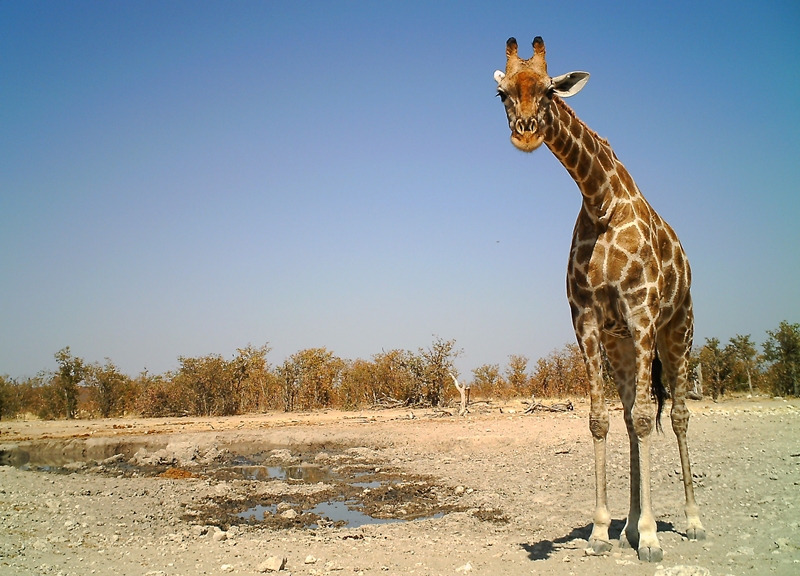
Angolan Giraffe at Etosha Heights (camera trap image)
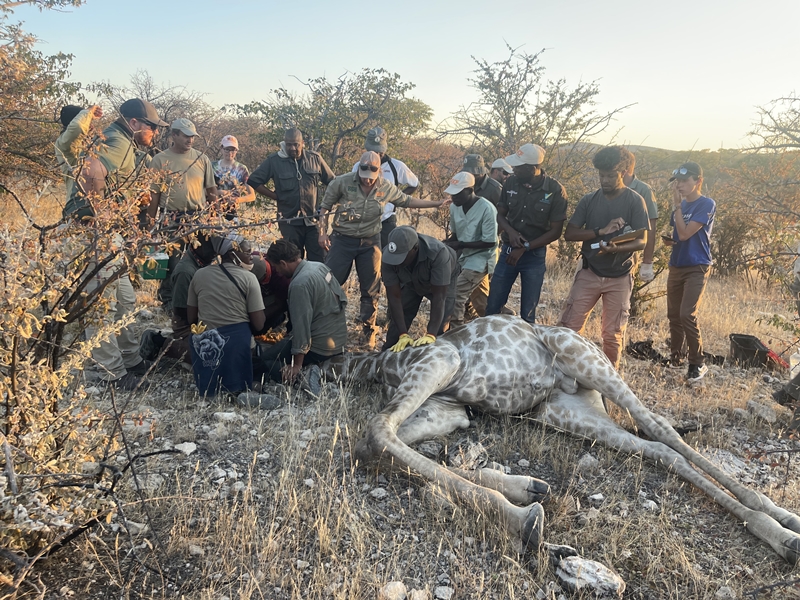
Fitting giraffe with GPS Ceres eartag at Etosha Heights
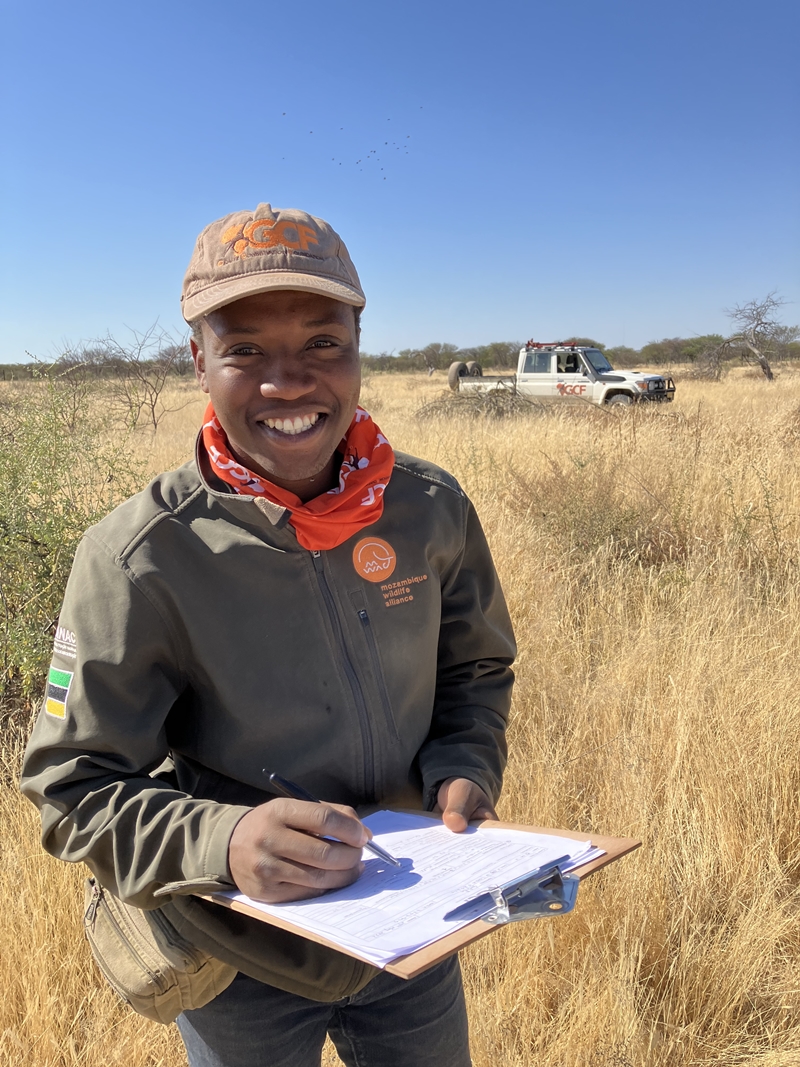
Wildlife Vet course at Etosha Heights
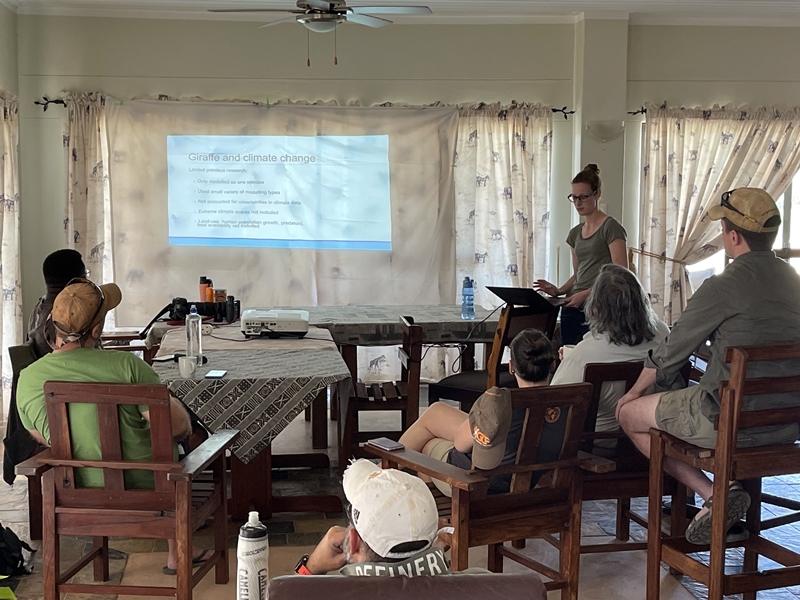
Giraffe and climate change presentation at SLEEC

Elephant inspecting camera trap installation at SLEEC
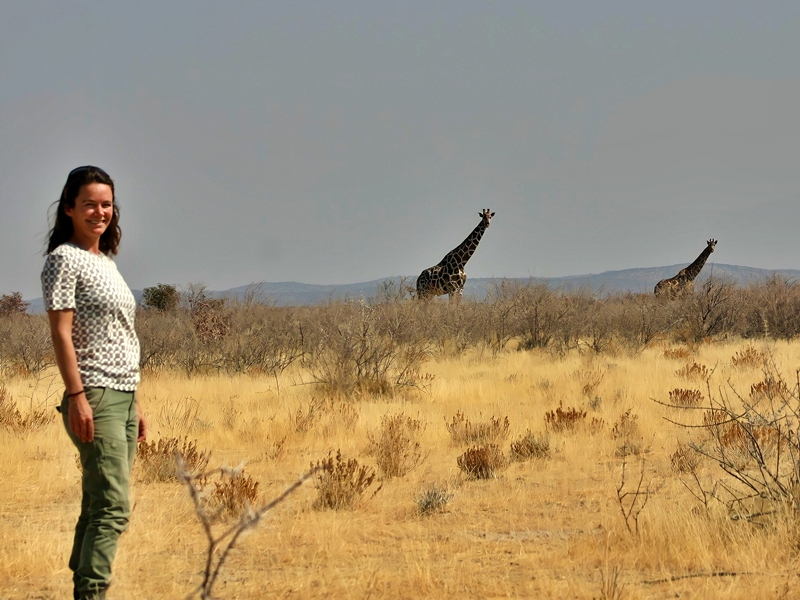
Martina Kusters, SLEEC Programme Coordinator
All funds raised during 2023 will contribute to the Project Fund so please do sign up for a sponsored challenge, support our creative initiatives, or make a donation if you are able to. Every Pound makes a difference. Thank you.
